When most people think of growing herbs, they picture the usual suspects: basil, mint, thyme, and rosemary.
While these classic herbs have their place in the kitchen and garden, there’s a whole world of lesser-known herbs that can be just as rewarding to grow—if not more so. These hidden gems offer unexpected flavors, medicinal benefits, and beautiful foliage or flowers that can enhance any space.
Imagine stepping into your garden and being greeted not only by the familiar aromas of basil and mint, but also by the sweet licorice scent of Anise Hyssop, or the citrusy brightness of Lemon Verbena. These aren’t just herbs; they’re experiences—fragrant, flavorful, and functional additions that bring something truly unique to your garden and your life.
One of the most exciting things about growing these under-the-radar herbs is how they can elevate both your cooking and your well-being.
Many of them have deep roots in traditional medicine and folk remedies. Some act as natural fertilizers or pest repellents, while others draw pollinators and beneficial insects into your garden. They aren’t just useful—they’re ecological powerhouses.
Even better, these herbs are often hardy, low-maintenance, and adaptable. Whether you have a sprawling garden or just a few pots on a balcony, many of these herbs can thrive with minimal care.
They’re perfect for gardeners who want to try something new without taking on too much extra work. And let’s be honest—there’s a certain joy in introducing your friends and family to a plant they’ve never seen before.
This list is all about expanding your herbal horizons. Maybe you’ve never heard of Lovage, or didn’t realize that Soapwort could actually make soap. Perhaps you’ve seen Vietnamese Coriander at an Asian market and wondered what it was. Now’s your chance to learn more and grow more.
In this guide, we’ll take you through eight herbs you probably haven’t thought to grow—but definitely should. Each one brings something special to the table, whether it’s an unusual flavor, a natural remedy, or an old-world charm that’s been forgotten in the rush toward mainstream garden trends.
From the healing properties of Comfrey to the buzz-worthy sensation of the Toothache Plant, you’re about to discover a whole new world of herbal possibilities.
So grab your gardening gloves and an open mind. Let’s explore eight underrated herbs that deserve a place in your soil—and your heart.
1. Anise Hyssop (Agastache foeniculum)
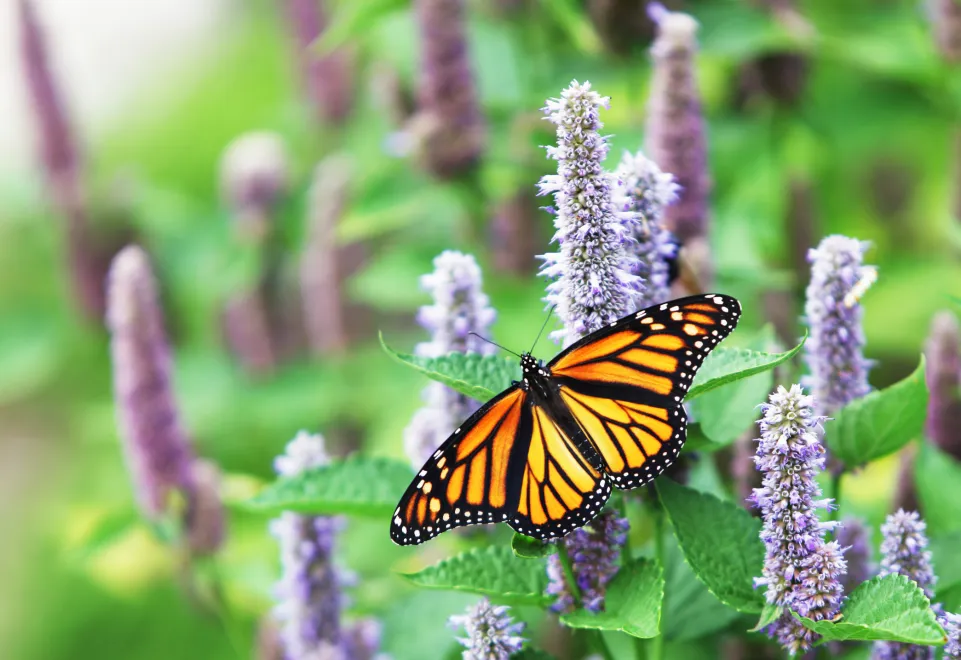
Anise Hyssop is a showstopper with tall purple spikes and an irresistible scent that falls somewhere between licorice and mint. It’s a native North American perennial that attracts pollinators like bees, butterflies, and hummingbirds.
Why It’s Worth Growing
This plant isn’t just pretty. It’s drought-tolerant, easy to grow, and deer tend to leave it alone. Anise Hyssop thrives in full sun and well-drained soil, and it can even handle less-than-perfect conditions. Once established, it asks for very little attention. If you like multi-functional plants, this one’s a winner.
How to Use It
The leaves make a naturally sweet tea that can soothe digestion and calm nerves. You can also chop them up and sprinkle them into salads or use the dried leaves in baked goods. The flowers are edible too, and they make a striking garnish.
2. Comfrey (Symphytum officinale)
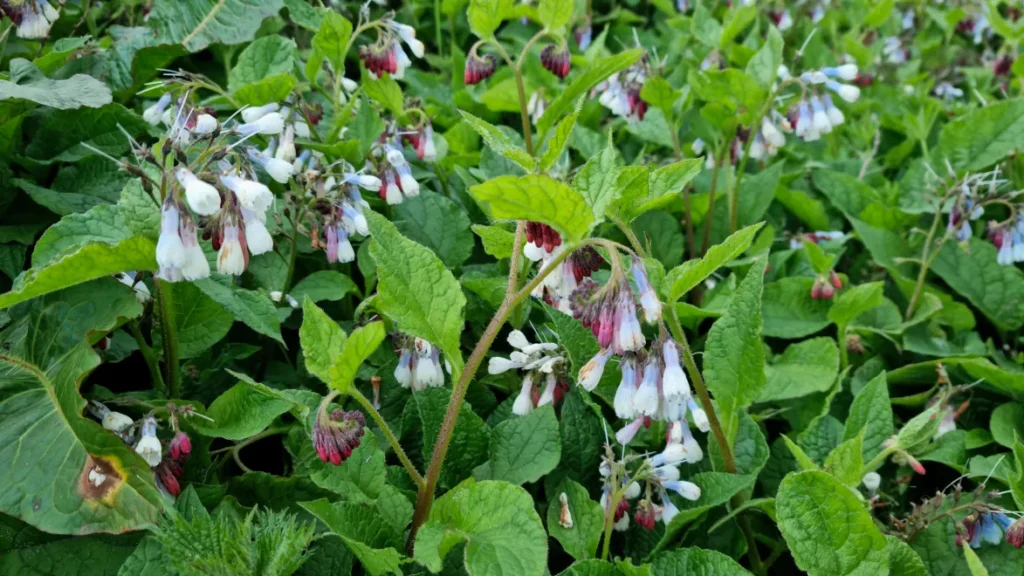
Comfrey is a powerhouse herb often called a “green healer.” With its broad, hairy leaves and bell-shaped flowers, comfrey is more than just a pretty plant. It’s a dynamic accumulator, which means it pulls nutrients from deep within the soil.
Why It’s Worth Growing
This is the gardener’s herb. It enriches compost, can be used as mulch, and is excellent for feeding other plants. Comfrey grows quickly, and you can harvest leaves several times a season. It’s resilient, tough, and spreads fast — just be mindful of where you plant it.
How to Use It
Traditionally, comfrey leaves were used to help heal bruises, sprains, and broken bones, earning it the nickname “knitbone.” These days, it’s more often used externally in salves and poultices. In the garden, comfrey leaves make a fantastic natural fertilizer. Just chop and drop them around your veggies, and let nature do its work.
3. Lemon Verbena (Aloysia citriodora)
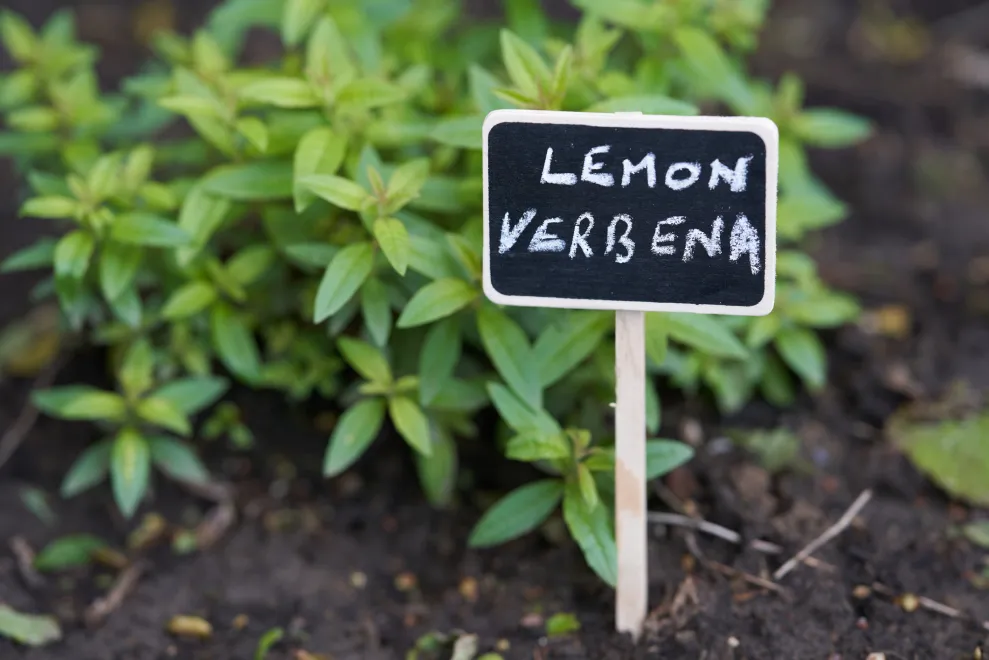
If you love bright, citrusy scents, lemon verbena is a must-grow. This woody shrub releases a powerful lemon aroma when its leaves are touched, making it a delight to have in any garden.
Why It’s Worth Growing
Lemon verbena is both fragrant and useful. It prefers warm weather and well-draining soil but can also be grown in pots and brought indoors during winter. Though it can grow tall (up to 6 feet), regular pruning keeps it manageable and bushy.
How to Use It
The leaves are used in teas, syrups, and desserts. Add them to fruit salads or steep in hot water for a calming herbal tea. Some people even use it in homemade cleaning products because of its fresh scent. Medicinally, lemon verbena may help with digestion and relaxation.
4. Lovage (Levisticum officinale)
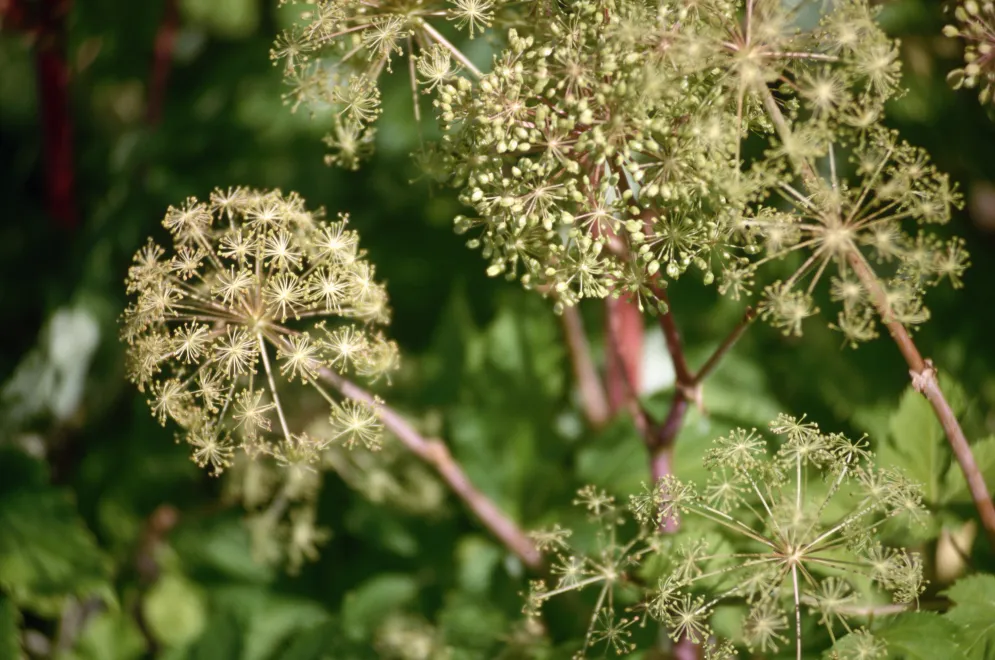
Lovage is a tall, leafy herb that tastes like strong celery. It’s an old-fashioned plant that deserves a modern revival. This perennial herb can grow over six feet tall and becomes a striking presence in the garden.
Why It’s Worth Growing
It’s incredibly hardy, surviving in most climates with little maintenance. Lovage comes back year after year, often stronger and more robust. The leaves, seeds, and roots are all useful, which makes it a very resourceful herb.
How to Use It
The leaves are great in soups, stews, and stocks — anywhere you’d use celery. The seeds resemble celery seeds and can be used in pickling or as a spice. Even the roots can be cooked or dried for herbal medicine. It’s a complete package in one plant.
5. Mexican Mint Marigold (Tagetes lucida)
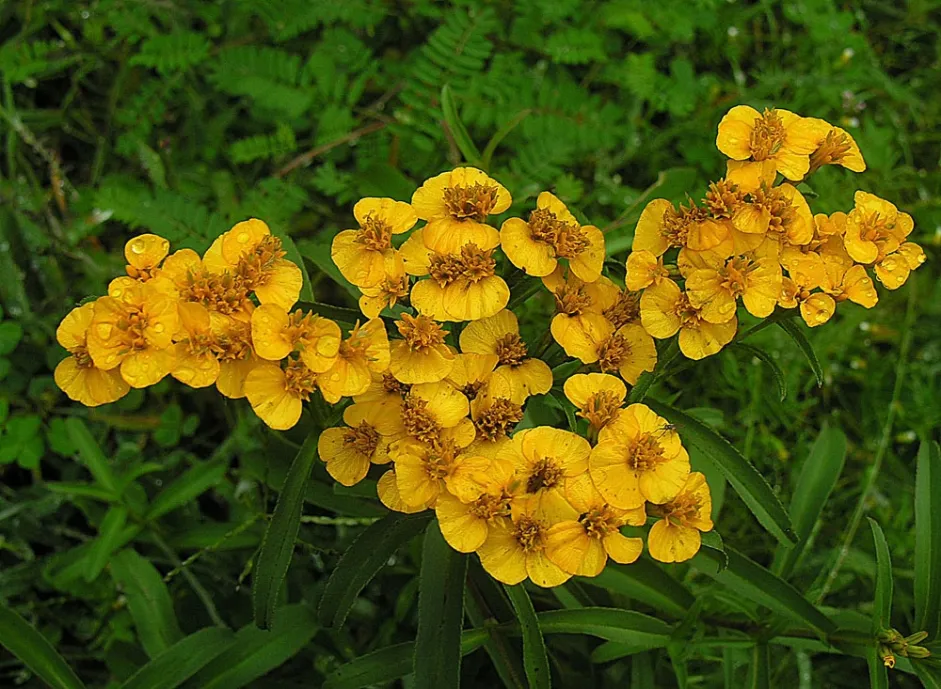
Also known as Texas tarragon, this sunny little herb is a great alternative to the fussier French tarragon. It’s heat-loving, low-maintenance, and blooms with golden-yellow flowers.
Why It’s Worth Growing
Unlike many herbs that wilt in extreme heat, Mexican mint marigold thrives in it. It also resists pests and adds a bright pop of color to your garden. It prefers full sun and well-drained soil but isn’t too picky.
How to Use It
The leaves have a tarragon-like flavor, making them perfect for seasoning chicken, eggs, or salad dressings. They also make a delicious tea. In Mexico, the herb has traditionally been used for digestive issues and as a ritual incense.
6. Soapwort (Saponaria officinalis)
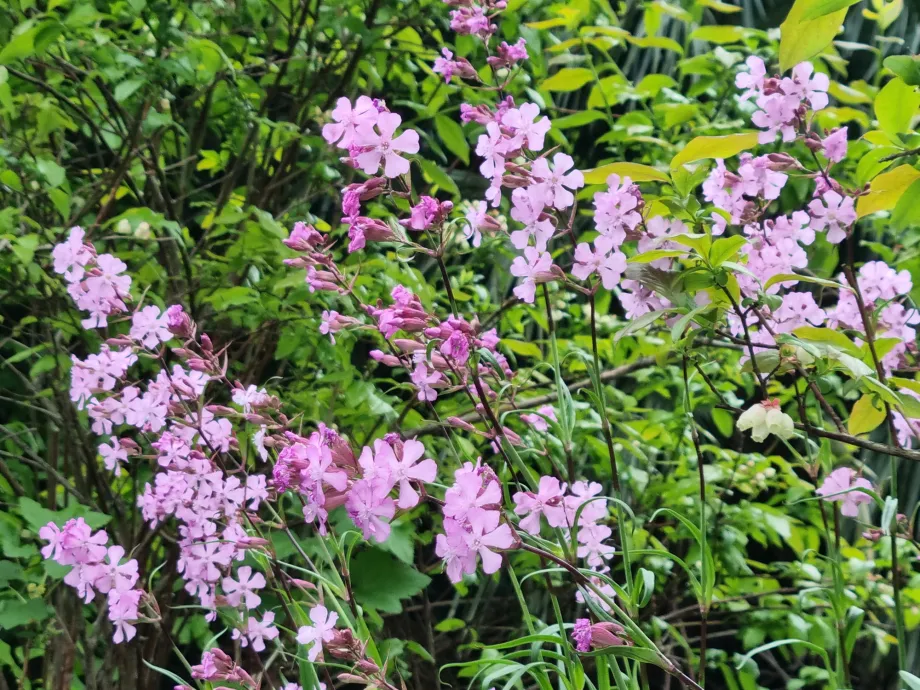
Soapwort is a humble herb with a secret superpower: it can create soap-like suds when its roots or leaves are mixed with water. This makes it both beautiful and practical.
Why It’s Worth Growing
It’s easy to grow and produces lovely pink or white flowers that bees love. Soapwort spreads quickly and can be used as ground cover in a sunny spot. It tolerates poor soil and light drought once established.
How to Use It
You can simmer the roots or leaves in water to make a gentle cleanser for delicate fabrics or sensitive skin. Historically, it was used to clean antique tapestries and is still popular among natural-living enthusiasts. It’s a charming addition to cottage-style gardens.
7. Toothache Plant (Acmella oleracea)
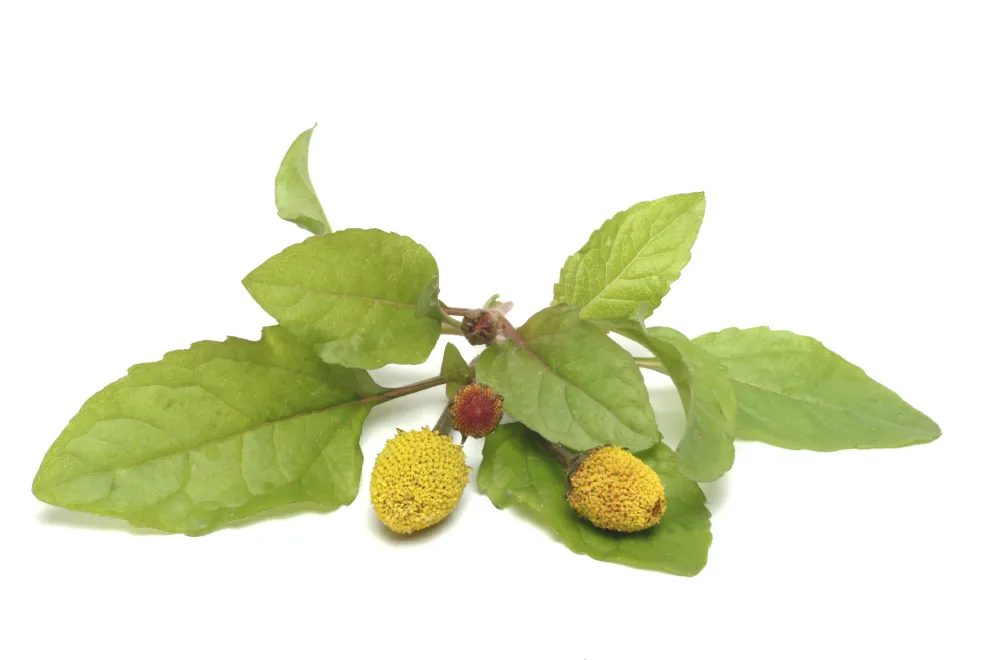
With its quirky name and even quirkier effects, the toothache plant is a garden novelty that actually packs a medicinal punch. The plant produces low-growing greenery and bright yellow “buzz” flowers that resemble eyeballs.
Why It’s Worth Growing
Toothache plant is easy to grow from seed and does well in containers or garden beds. It loves heat and humidity, making it ideal for summer gardens. It also deters pests and attracts pollinators.
How to Use It
Chewing on a flower or leaf creates a tingling, numbing sensation that can relieve mild toothache pain — hence the name. It’s also known to stimulate saliva, aid digestion, and is being studied for its antimicrobial properties. The flowers add a spicy zing to salads and cocktails.
8. Vietnamese Coriander (Persicaria odorata)

This herb may look like mint but has a flavor closer to cilantro — strong, peppery, and citrusy. It’s also known as Rau Ram and is a staple in Southeast Asian cuisine.
Why It’s Worth Growing
Vietnamese coriander grows well in warm, humid environments and is a great cilantro substitute for hot climates where cilantro bolts quickly. It does best in moist soil and partial shade and grows as a low, trailing plant that can fill in garden spaces.
How to Use It
Add the leaves to salads, rice paper rolls, soups, and noodle dishes. It’s an essential herb in Vietnamese and Thai cooking, especially in dishes where regular cilantro would wilt. It’s also believed to aid digestion and reduce inflammation.
Final Thoughts
Stepping outside the realm of traditional herbs can feel like uncharted territory, but it’s also where the magic happens. These eight lesser-known plants offer more than just novelty—they introduce new flavors, medicinal uses, and gardening experiences that enrich your connection to nature and your kitchen alike. They invite you to think differently about what it means to grow your own food and natural remedies.
Each herb we’ve explored has its own personality. Anise Hyssop brings bees to your garden and sweetness to your tea. Comfrey enriches your soil while offering healing potential. Lemon Verbena lifts your spirits with its scent, while Lovage stands tall and proud, offering flavor and heritage in equal measure.
Mexican Mint Marigold thrives under the sun and brings golden cheer to your plate. Soapwort connects us to centuries of natural cleaning traditions. The Toothache Plant delivers both zing and utility, and Vietnamese Coriander transports you straight to the spice-filled dishes of Southeast Asia.
Growing these herbs isn’t just about filling garden space—it’s about cultivating curiosity. These plants challenge the idea that only a handful of herbs are worth growing. They remind us that the world is full of incredible plant allies waiting to be rediscovered and appreciated.
You don’t need a large yard to get started. Most of these herbs can grow happily in pots on a balcony, windowsill, or patio. What matters is the intention behind your garden—the desire to try something new, support biodiversity, and bring more life and flavor into your daily routine.
So the next time you plan your garden, think beyond the ordinary. Let these unsung heroes take root and see how your garden—and your perspective—blossoms. With a little care and attention, these unique herbs will reward you with beauty, usefulness, and plenty of surprises. Happy growing!




